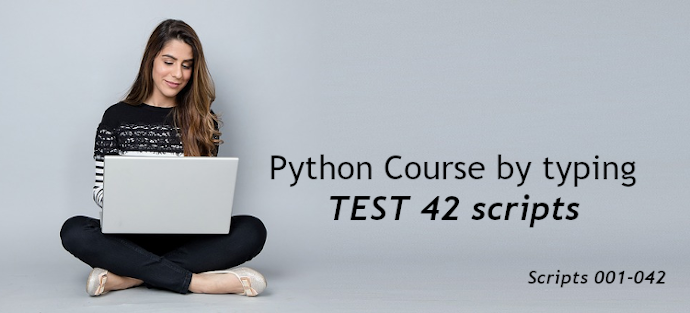Introduction to Python course
When you want to start learning Python programming language or any other programming language you have the same problem as everybody: how to do it effectively ?
You probably want to learn as fast as possible without wasting time for any details. Especially at the beginning the details does not make any sense for your because you don’t understand anything.
But there is a way how to learn any language and especially programming in Python in a most effective way. The only way is to start typing the first instructions and test them in different ways.
Python course by simple steps
Especially for you I created the python course. You can start learning just now. Go through all the sections below step by step. Remember to type by hand all the code into your best editor and run and test.
It is very important that you will not just copy/paste the code. You need to learn your mind and hands to type all the instructions. Let’s start:
1. Python print function
Python print function – to give you first results as fast as possible I started from printing something in the command line. You will use the print function in many possible ways during your learning process and understanding the Python language.
2. Python strings
Python strings – manipulating strings in python will be one of your mostly used activities in daily programming. You need to specially focus on this topic to learn it properly. Everything we send back and again in the Internet or save to local file is mostly parsed into strings. Later we try to convert it into other types in programming language.
3. Python numbers
Python numbers – as with strings you will use numbers in so many situtations starting from simple iterating through elements in the list and finishing in advanced calculating of different math formulas.
4. Python arrays
Python arrays – in many language arrays are standard structure to make some collections of data. In python we also have this structure but not as a standard. In most cases you will use lists besides arrays.
5. Python lists
Python lists – is the most preffered data structure for some data collection. In Python it is very simple to instantiate the list and manipulate elements with it.
6. Python tuples
Python tuples – tuples are like static lists. Still you can join tuples into new ones but you cannot modify their content.
7. Python dictionaries
Python dictionaries – this structure is very usefull data structure especially when we want to keep (key,value) pairs. They help us to keep elements using our own “indexes” named here keys.
8. Python sets
Python sets – you can use this structure to find the difference between the same data types. You can even convert lists do sets in order to eliminate some subset of elements and then convert result again to list. When you start to use sets in this situations you will not stop it doing 🙂
9. Python queues
Python queues – this structures are very handful when you want to have some kind of operations with concrete order. You can create LIFO, FIFO queues depending on you needs or project requirements.
10. Python stack
Python stack – probably you have heard about stack when you tried to debug any program for example in python. This structure is also available in Python and you can use it to keep some operation objects. Good example is to keep history of operations like undo, redo.



